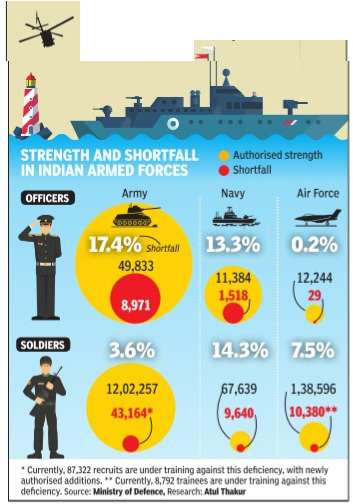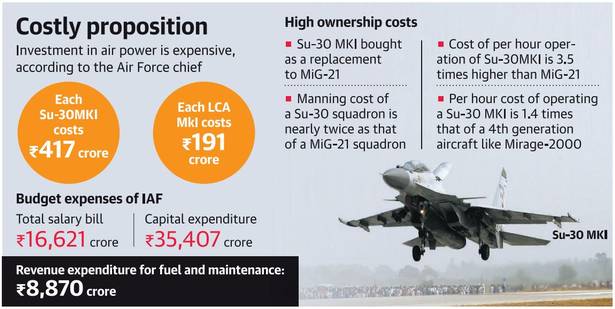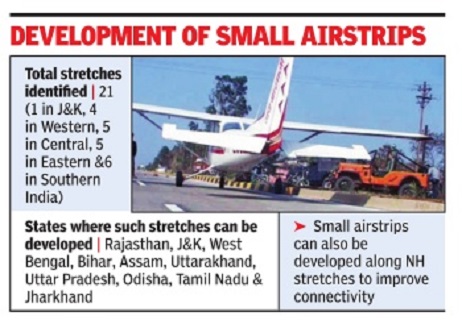Indian Air Force

This is a collection of articles archived for the excellence of their content. Readers will be able to edit existing articles and post new articles directly |
Contents |
Funds, shortage of
2018
Rajat Pandit, Funds crunch slowly crippling air force, October 20, 2018: The Times of India
Acquisitions, Operational Preparedness Hit
A severe fund crunch is slowly but steadily impacting the operational preparedness of the IAF, forcing it to put on hold acquisitions of helicopters, “smart bombs” and missiles as well as repair of runways in crucial airbases on both the western and eastern fronts.
Sources said several deals, including the ones for 48 more Russian Mi-17 V5 medium-lift helicopters (Rs 6,900 crore) and 32 additional British Hawk advanced jet trainers (Rs 3,500 crore), have been put on the back-burner due to lack of funds. “Similar is the case for Russian laser-guided bombs and other precision-guided munitions,” said a source.
More alarmingly, the paucity of funds has also adversely hit the upgrade of infrastructure and runways in airbases around the country, with at least three of them being under the Shillong-based Eastern Air Command at a time when China continues to upgrade its military aviation set-up in the Tibet Autonomous Region (TAR).
“Apartfrom having 14 major airfields, advanced landing grounds and heli-pads in TAR, China is constructing underground hangers and parking bays for its fighters by digging tunnels into mountains at some of them,” said another source.
On the western front, the IAF has already been taken to court by contractors involved in runway resurfacing works at Awantipur (J&K) and Chandigarh stations due to non-payment of outstanding bills. “Ongoing work at stations like Sirsa and Bakshi-ka-Talab (Lucknow), as also the IAF academy at Hyderabad, may suffer due to the same reasons,” said another source.
While the Rafales are slated for induction in 2019-2022, the S-400s are to be delivered in the 2020-2023 timeframe. Though the money for these two “critical operational inductions” will be paid in instalments, it has virtually emptied out the already curtailed IAF budget.
The IAF had asked for Rs 77,695 crore under the capital (modernisation etc) outlay in the 2018-2019 budget, but got only Rs 35,770 crore. Under the revenue (day-to-day operating costs, salaries etc) head, it got Rs 28,821 crore instead of the Rs 35,261 crore demanded. The story is similar for the Army and Navy, which got just 60% and 56% of their projected requirements under the capital head.
Take the over 12-lakh strong Army, for instance. The force is saddled with 68% “vintage” weaponry, 24% “current” and only 8% “state-of-the-art” equipment. It had asked for Rs 44,573 crore under the capital head but got only Rs 26,816 crore.
The allocated funds are not enough to even pay for “committed liabilities or installments” of earlier deals, leaving virtually nothing for new modernization projects.
2019/ high expenses and ownership costs

Budget expenses;
Revenue expenditure for fuel and maintenance;
High ownership costs, presumably in 2019
From: Dinakar Peri, IAF chief flags delays in manufacture of equipment, February 1, 2019: The Hindu
See graphic:
Indian Air Force- budget expenses, revenue expenditure for fuel and maintenance, high ownership costs, presumably in 2019
Dakota
2018: Chandrasekhar’s gift
Kai Friese , Transport of delight “India Today” 26/2/2018
While the purchase of a squadron or two of a certain multi-role fighter continues to be dogged by controversy, another old favourite of the IAF has taken flight at no cost to the exchequer. In a quiet ceremony at the Akash Mess in New Delhi on February 13, Air Chief B.S. Dhanoa signed a deed accepting the generous gift of an airworthy Douglas 'Dakota' from veteran IAF transport pilot Air Commodore (Retd) MK Chandrasekhar.
The vintage aircraft was, in fact, professionally restored over several years in the UK as a sentimental gesture by the NDA MP and tycoon Rajeev Chandrasekhar. Speaking on the occasion, he said, "The Dak was part of my childhood as my father flew it all over India and today I fulfil my dream of helping [him] donate a Dakota to the air force." It was an exciting moment for the assembled veterans, given the significance of the Dakota as a workhorse of the IAF and of civil aviation from the 1940s well into the 1970s, including active duty in the 1971 Bangladesh war.
When the 'new' (1948 vintage) plane arrives at the Hindon air base next month-after an epic journey involving six 'hops' through France, Greece, Egypt, Oman and Gujarat-it will join the IAF's 'vintage fleet' as the only Dakota still flying in Asia. Adding historical resonance, the plane will bear the tail registration, VP-905, in commemoration of the first Dakota that carried Indian troops to Srinagar on October 27, 1947, at the start of India's first war with Pakistan.
Perhaps that's gilding the lily: Nostalgia like everything else in this country is soon mired in politics. Overheard at the gifting event were conspiracy theorists invoking the old canard that VT or VP registrations are a 'colonial' mark of shame (a BJP MP has complained that 'VT' stands for 'Viceroy Territory'). Others tweeted indignation over the fact that a previous government had rejected Chandrasekhar's gift. Hopefully, such kvetching will soon be drowned out by the once familiar note of a 'gooney bird' rumbling through Indian skies again.
Landing on highways
2016: 21 highway stretches identified
Dipak Dash, IAF picks 21 highway sections for landings, Oct 18 2016 : The Times of India
Indian Air Force (IAF) has identified 21 highway stretches across the country which can be used for aircraft operation during “operational contingencies“ and natural disaster for rescue. Some of the stretches are close to the India-Pakistan border in Rajasthan and Gujarat.
Some of these also fall in border states of Jammu & Kashmir, Assam, West Bengal, Uttar Pradesh and Uttarakhand. These stretches have been identified after a “detailed study“ by the IAF keeping in mind the minimum requirement for landing and take off of fighter and other aircraft in case of emergencies.
TOI in November 2015 had first reported how IAF had asked National Highways Authority of India (NHAI) to share the details of its plans to upgrade the existing highways or build new ones so that necessary features can be incorporated to make certain portions function as “runways“ and allow for both landings and take-offs.
Sources said some of the stretches that have been shortlisted for such purpose are in Jaisalmer region in Rajasthan and Dwarka in Gujarat.
Manufacture of defence equipment
2019/ delays in domestic development and manufacture of defence equipment
Dinakar Peri, February 1, 2019: The Hindu
“In combat, there is no silver medal. You win or you lose”
The Indian Air Force (IAF) has not shifted any goal posts and is fully committed to indigenisation, Air Chief Marshal (ACM) BS Dhanoa said while flagging delays in domestic development and manufacture of defence equipment. Air power, he said, was a expensive proposition.
“IAF has not shifted any goal posts as alleged. The development has taken such an incredibly long time that armament and technology has gone obsolete… I as the service chief can make concessions to Hindustan Aeronautics Limited (HAL). Will the enemy make concessions to me when I go and meet the enemy?” said ACM Dhanoa at the 10th Jumbo Majumdar international lecture organised by the Centre for Air Power Studies. “In combat, there is no silver medal. Either you win or you lose.”
His comments come in the backdrop of recent reports that IAF has been changing parameters of indigenous Light Combat Aircraft (LCA) Tejas adding to the delay in development. The IAF has contracted for 40 LCA Mk-I jets, issued a Request For Proposal (RFP) for 83 LCA Mk-IA variants and committed to procure 12 squadrons of LCA Mk-II and eventually the Advanced Medium Combat Aircraft (AMCA).
ACM Dhanoa said a crucial contribution to the success of indigenisation was also the sacrifice of IAF’s pilots in testing these aircraft to battle worthy standards. “We have lost 17 pilots and engineers in air accidents during testing and evaluation of the indigenous Marut, Kiran, Ajeet, Saras and early warning prototype aircraft,” he said. Air power would remain a major player in future conflicts, he stated. Investment in air power was an expensive proposition. For instance, each Su-30 costs ₹417 crores. Even the LCA Mk I costs ₹191 crores.
IAF chief flags delays in manufacture of equipment There had to be a mix high, medium and low technology, ACM Dhanoa said. “It’s the high end fighters and other equipment that help you shape the air battle for others to be able to carry out their task.” The Rafale jets and the S-400 air defence systems fit in this, he observed.
ACM Dhanoa said that as on date, the backlog with HAL due to long overhaul cycle and delays in upgradation was approximately of one squadron Jaguars, nearly two squadrons of Su-30MKI and one squadron Mirage-2000 jets.
Further, production of Su-30 is delayed by over two years and LCA production commitment by over six years. “To make up for losses HAL has to play a key role to step up manufacture and overhaul,” he said. He also highlighted that the IAF had maintained the Air Staff Quality Requirements (ASQR) of the first 20 LCA Mk I at standards issued in 1985.
ACM Dhanoa said that to overcome production delays and the falling number of fighter squadrons emergency purchases had to be made.
Pathankot: Air Force station
A brief history
The Times of India Jan 03 2016
Ajay Sura
Used For Deep Strikes Into Pak
Barely 40km from the Pakistan border the Pathankot Air Force station is one of the strate gically important forward airbases of India during war and peacetime.
The station is a defen sive airfield due its proximi ty to Pakistan and vital for tactically offensive oper ations of the IAF. It provides logistic support to J&K.
The Pathankot airbase along with the airfield at Amritsar provide an essen tial operational range for deep air raids into Pakistan It houses MiG-21 Bison fighter jets and MI-25 and MI-35 attack helicopters. Be sides this, it has Pechora surface-to-air missiles, oth er air defence missiles and surveillance radars. The station witnessed many at tacks during the wars with Pakistan in 1965 and 1971.
During the 1965 War, Pa kistan army's commandos had raided Pathankot air base and other forwards air bases, including Adampur and Halwara, in Punjab.
In 1971, Pakistan launched an air strike on Pathankot airbase and dam aged a portion of the run way. Though IAF veterans are happy at no loss to high value assets in Friday's at tack, they are of the view that such vital airbases, lo cated in operational areas should be guarded by the Army or by specialised forces.
Air Marshal Randhir Singh (retired), former commander of the South Western Air Command, said, “Air force is a technical force. Learning lessons from such attacks, the Centreshould ensure their security by specialised forces.“
Transport aircraft/cargo
2018: rapid airlift capability
December 19, 2018: The Times of India
The IAF on Tuesday checked its ‘rapid airlift capability’ by deploying 16 transport aircraft, like C-17 Globemaster-III, Ilyushin-76 and Antonov-32, in a single wave to forward areas in Jammu & Kashmir facing both Pakistan and China. The 16 planes airlifted a record 463 tonnes of load from Chandigarh airbase to airfields and drop zones in the Ladakh region, ranging from Kargil and Leh to Thoise and Fukche. ‘The entire wave was accomplished in little less than six hours. The WAC is entrusted with air maintenance of the entire northern region and airlifts close to 3,000 tonnes of load per month,’ an officer said
